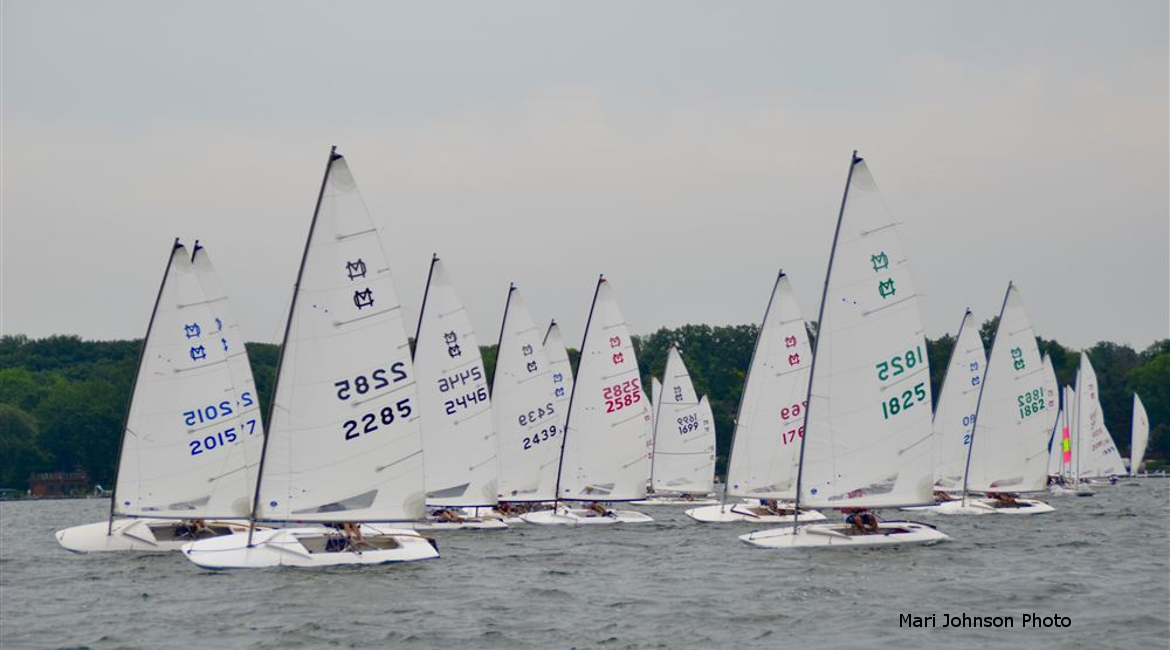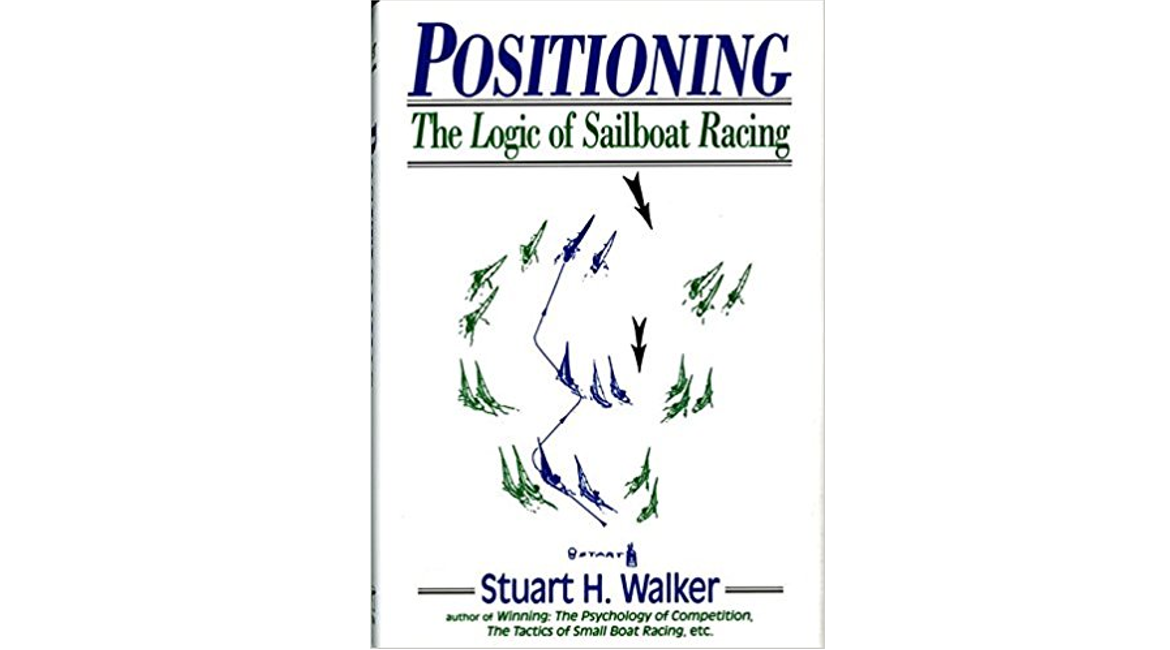One of our readers told us he sees lots of sailors losing ground because they don’t realize the importance of getting the windward mark laylines right. We were skeptical until we reviewed our recent drone videos and saw several examples in the first mark rounding we viewed.
In this article, we’ll discuss the importance of getting the laylines right, the difficulties involved, and a collection of the best tips we could find.
Mistakes at the Windward Mark Laylines are Common and Costly
Examples
We didn’t have to go far to find examples of layline mistakes. Watch this video with commentary from a Lake Beulah Yacht Club C Scow race.
Even Olympians don’t always get the windward mark laylines right. Take a look at this short clip from the 2008 Olympics.
As you can see from the videos, it’s easy to lose places at the laylines. This happens for two primary reasons:
Getting to the Layline Too Early
If you get to the layline too early, you can no longer play the shifts, or connect the dots to make further gains. You also lose tactical options.
- A lift or increase in wind velocity causes you to overstand and sail extra distance. Other boats that were below the layline may now be fetching the mark.
- A header favors the boats inside the laylines, since they are closer to the shift.
- In an approaching lull, you have fewer options to sail towards more pressure.
- Boats not on the layline can tack on your air, leaving you with few options.
Misjudging the Layline
It’s often hard to judge the laylines, even when you don’t try to hit them early. You need a good visual reference, and may have to contend with wind changes, dirty air, waves, or current.
Top Tips for Judging Laylines
We reviewed our usual sources to collect the top tips for judging the windward mark laylines.
Estimate and Avoid the Laylines Early
As you get into the second half of the beat, estimate your relative distance to the port and starboard laylines. Are you twice as close to one layline compared to the other? If so, make sure your strategy is sound before you continue toward the closer layline. If you’re three times as close to one of the laylines, you should feel very uneasy and have a really good reason to keep going. For more on this, including diagrams, see our post Sail the Long Tack: Part of Your Strategy Mix.
Get an Accurate Visual Reference
A simple rule of thumb is that if you have to look back over your shoulder to see the mark, you’re probably on or past the layline. You can do a lot better than this with the following technique:
Know your tacking angle for the conditions
Your tacking angle is the difference in upwind headings between port and starboard tack. This varies with boat type, wind conditions, waves, sail trim, and boat speed. Tacking angles may range from 75 degrees in high-performance boats in ideal conditions to over 100 degrees in light air. For example, an MC Scow’s tacking angle ranges from approximately 80 degrees to 110 degrees.
Practice in various conditions to learn your boat’s tacking angles. Use a compass and record the differences in headings between tacks. To get an accurate reading, make sure you are sailing in the groove (not pinching, footing, or going slow) before and after the tack.
Use your tacking angle to sight the layline

If your tacking angle is 90 degrees, you know you are on the layline when the mark is directly abeam. You can use a reference line on your boat to check this.
If your tacking angle is larger or smaller than 90 degrees, it gets trickier, but you can gain an advantage by having a good sense of where to look. Some sailors draw tacking lines on the boat to help. There’s a good discussion of this in Sailing Anarchy.
Caution – make sure you’re trimmed up and sailing in the groove before using your visual reference.
Look at other boats
Other boats are a great clue. If they’re fetching the mark, they are on the layline. Don’t cross or duck them, unless you have a good reason to go further. However, use caution and make sure the other boats aren’t giving you false information:
- Are they trimmed up and sailing well?
- Are they overstood and purposely bearing off to make you think they are below the layline?
Anticipate Changes
Even if you’re fairly close to the mark, you should still anticipate changes to refine your layline call. You might tack before the layline in the following conditions.
- Favorable shift coming. A right-hand shift brings you closer to the starboard layline. A lefty brings you closer to the port layline. Tack early if you’re confident.
- More breeze coming. More breeze lifts you and decreases your tacking angle. If you’re certain, tack early.
- Tactical considerations against other boats. We’ll cover these in a separate article.
By contrast, you might delay your tack in the following conditions:
- Unfavorable shift coming
- Approaching a lull
- No clear air on layline. If you can’t cross ahead of a pack of boats, go further to compensate for the dirty air.
- Waves. Waves will usually increase your tacking angle.
Make a Good Tack
When you make your final tack to the layline, make it a good one, to preserve the assumptions you made in judging the layline. Don’t tack when you’re slow or in big waves. Make sure you don’t overshoot the tack and lose distance to windward.
Practice Tips
You can practice judging laylines by yourself or with another sailor. Try it in various wind conditions. Here are three drills, with different levels of complexity.
- Single mark. Approach a mark from various distances and tack when you think you are exactly on the layline. Try to round the mark within 1/2 boat length without pinching or footing.
- Slalom course. Set three marks about 50 yards apart in an upwind line. Start at the first mark and sail a slalom course upwind, tacking only once when you reach the layline for the next mark. Round the top mark and sail downwind, gybing through the slalom course. Round up at the bottom mark and do it again. Good tacking and gybing practice.
- One-tack windward leg (paired). Set up a medium length windward leg. One boat must sail the beat with only one tack, sailing to the layline and tacking to try to make the windward mark. The other boat can either play the shifts or sail a one-tack beat to the opposite side of the course. Compare results. From Sailing Drills, by Rick White.
Ladder Rungs: Understand the Race Course with a Visual Approach
Finishing Strategy: Favored End and Laylines
Windward Mark Preparation Checklist





